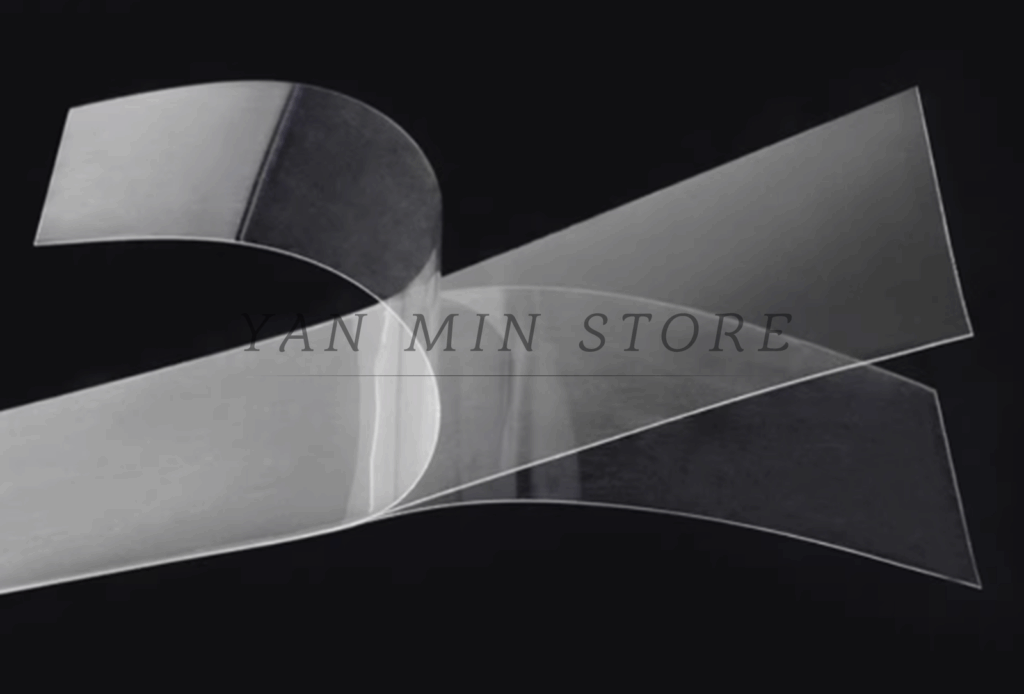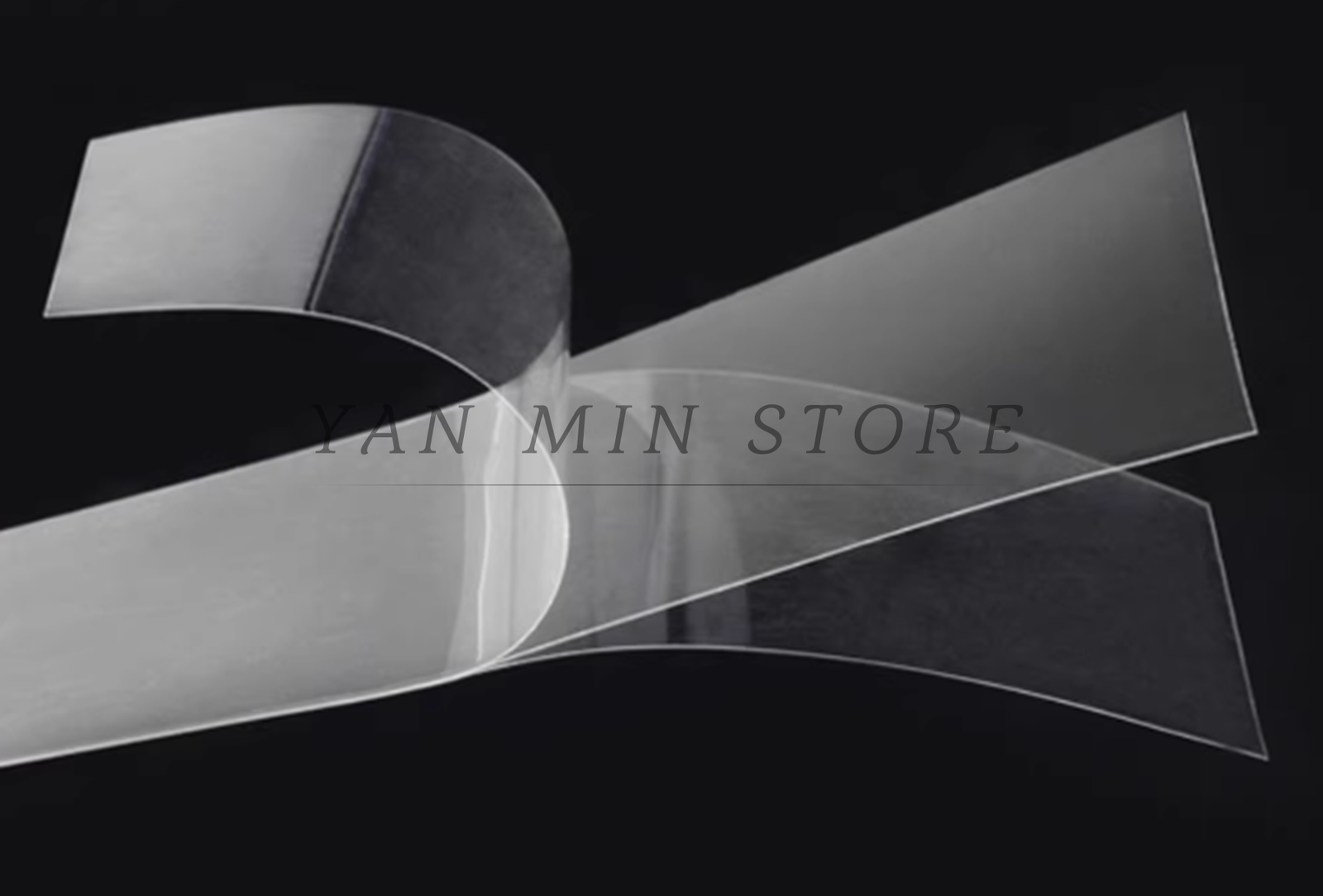
Silicone Film: Properties, Applications, and Future Trends
Silicone film is a versatile material gaining prominence across diverse industries due to its unique combination of properties. This article delves into the characteristics of silicone film, its wide-ranging applications, and emerging trends shaping its future. Understanding the nuances of silicone film is crucial for engineers, designers, and researchers seeking innovative solutions in various fields. From electronics to healthcare, the adaptability of silicone film makes it an invaluable asset.
Understanding Silicone Film
Silicone film, at its core, is a thin layer of silicone polymer. This polymer is derived from silicon, an abundant element found in sand. The manufacturing process involves polymerizing siloxanes, resulting in a material that exhibits exceptional flexibility, thermal stability, and chemical resistance. The thickness of silicone film can vary from a few micrometers to several millimeters, depending on the application requirements. Its inherent properties distinguish it from other polymer films, making it a preferred choice in demanding environments.
Key Properties
- Thermal Stability: Silicone film maintains its properties over a wide temperature range, typically from -50°C to 200°C. This makes it suitable for high-temperature applications where other polymers would degrade.
- Chemical Resistance: It is resistant to many chemicals, including acids, bases, and solvents. This property is crucial in industrial and laboratory settings.
- Flexibility: The film remains flexible even at low temperatures, preventing cracking or brittleness.
- Electrical Insulation: Silicone film is an excellent electrical insulator, making it ideal for electronic applications.
- Biocompatibility: Many grades of silicone film are biocompatible, meaning they are non-toxic and do not cause adverse reactions in biological systems. This makes them suitable for medical devices and implants.
- Water Repellency: Silicone inherently repels water, adding an extra layer of protection in wet or humid conditions.
Applications of Silicone Film
The unique properties of silicone film translate into a wide array of applications across various sectors. Here are some notable examples:
Electronics
In the electronics industry, silicone film is used as a protective layer for sensitive components. Its electrical insulation properties prevent short circuits and protect against environmental factors. It is also used in flexible electronics, where its flexibility allows for the creation of bendable circuits and displays. Furthermore, silicone film serves as a dielectric layer in capacitors and other electronic devices, enhancing their performance and reliability. The heat resistance of silicone film is also leveraged in high-power electronic devices, preventing thermal runaway. [See also: Flexible Circuit Board Design]
Healthcare
The biocompatibility of silicone film makes it indispensable in healthcare applications. It is used in wound dressings to promote healing and prevent infection. Silicone film is also employed in medical implants, such as breast implants and catheters, due to its inertness and resistance to degradation within the body. Furthermore, it is used in transdermal drug delivery systems, allowing for controlled release of medication through the skin. The non-allergenic nature of silicone film minimizes the risk of adverse reactions in patients. [See also: Biocompatible Materials in Medical Implants]
Automotive
In the automotive industry, silicone film is used in gaskets, seals, and hoses due to its resistance to extreme temperatures and chemicals. It helps prevent leaks and ensures the reliable operation of engines and other critical components. Silicone film is also used in sensors, protecting them from harsh environmental conditions and ensuring accurate readings. The durability of silicone film contributes to the longevity of automotive parts. [See also: Automotive Gasket Materials]
Textiles
Silicone film can be applied to textiles to provide water resistance, stain resistance, and improved durability. It is used in outdoor clothing, upholstery, and industrial fabrics. The flexibility of silicone film allows it to conform to the fabric without compromising its comfort or breathability. Furthermore, it can enhance the aesthetic appeal of textiles by providing a smooth, glossy finish. [See also: Waterproofing Textiles with Silicone]
Aerospace
The aerospace industry utilizes silicone film for its high-temperature resistance and electrical insulation properties. It is used in wire insulation, sealing components, and protecting sensitive electronics from extreme environments. The lightweight nature of silicone film is also advantageous in aerospace applications, where weight reduction is critical. The ability of silicone film to withstand harsh conditions ensures the reliable operation of aircraft and spacecraft. [See also: High-Temperature Polymers in Aerospace]
Emerging Trends in Silicone Film Technology
The field of silicone film technology is continuously evolving, with new innovations emerging to address specific application needs. Here are some key trends shaping the future of silicone film:
Self-Healing Silicone Film
Researchers are developing silicone film with self-healing capabilities, allowing it to repair minor damage and extend its lifespan. This technology involves incorporating microcapsules containing healing agents into the silicone film matrix. When the film is damaged, the microcapsules rupture, releasing the healing agents and repairing the damage. Self-healing silicone film has the potential to significantly reduce maintenance costs and improve the reliability of various products. [See also: Self-Healing Polymers]
Conductive Silicone Film
By incorporating conductive fillers such as carbon nanotubes or metal nanoparticles, silicone film can be made electrically conductive. This opens up new possibilities for applications in flexible electronics, sensors, and energy storage devices. Conductive silicone film can be used to create flexible circuits, electrodes, and interconnects. The combination of conductivity and flexibility makes it an attractive material for emerging technologies. [See also: Conductive Polymers in Electronics]
Biodegradable Silicone Film
To address environmental concerns, researchers are exploring the development of biodegradable silicone film. This involves modifying the silicone polymer to make it more susceptible to degradation by microorganisms. Biodegradable silicone film would reduce the environmental impact of silicone products and promote sustainability. While still in the early stages of development, this technology holds great promise for the future. [See also: Biodegradable Polymers]
Microstructured Silicone Film
Creating microstructures on the surface of silicone film can enhance its properties and functionalities. For example, microstructures can improve adhesion, reduce friction, or create superhydrophobic surfaces. Microstructured silicone film is used in microfluidic devices, sensors, and anti-reflective coatings. The precise control over microstructure dimensions allows for tailoring the film’s properties to specific applications. [See also: Microfluidic Device Fabrication]
Conclusion
Silicone film is a remarkably versatile material with a wide range of applications across diverse industries. Its unique combination of properties, including thermal stability, chemical resistance, flexibility, and biocompatibility, makes it an invaluable asset for engineers, designers, and researchers. As technology continues to advance, we can expect to see even more innovative applications of silicone film in the future. From self-healing films to conductive films and biodegradable options, the possibilities are endless. Understanding the properties and potential of silicone film is crucial for staying ahead in today’s rapidly evolving technological landscape. The future of materials science is intertwined with the ongoing developments in silicone film technology, promising exciting advancements across various sectors.

